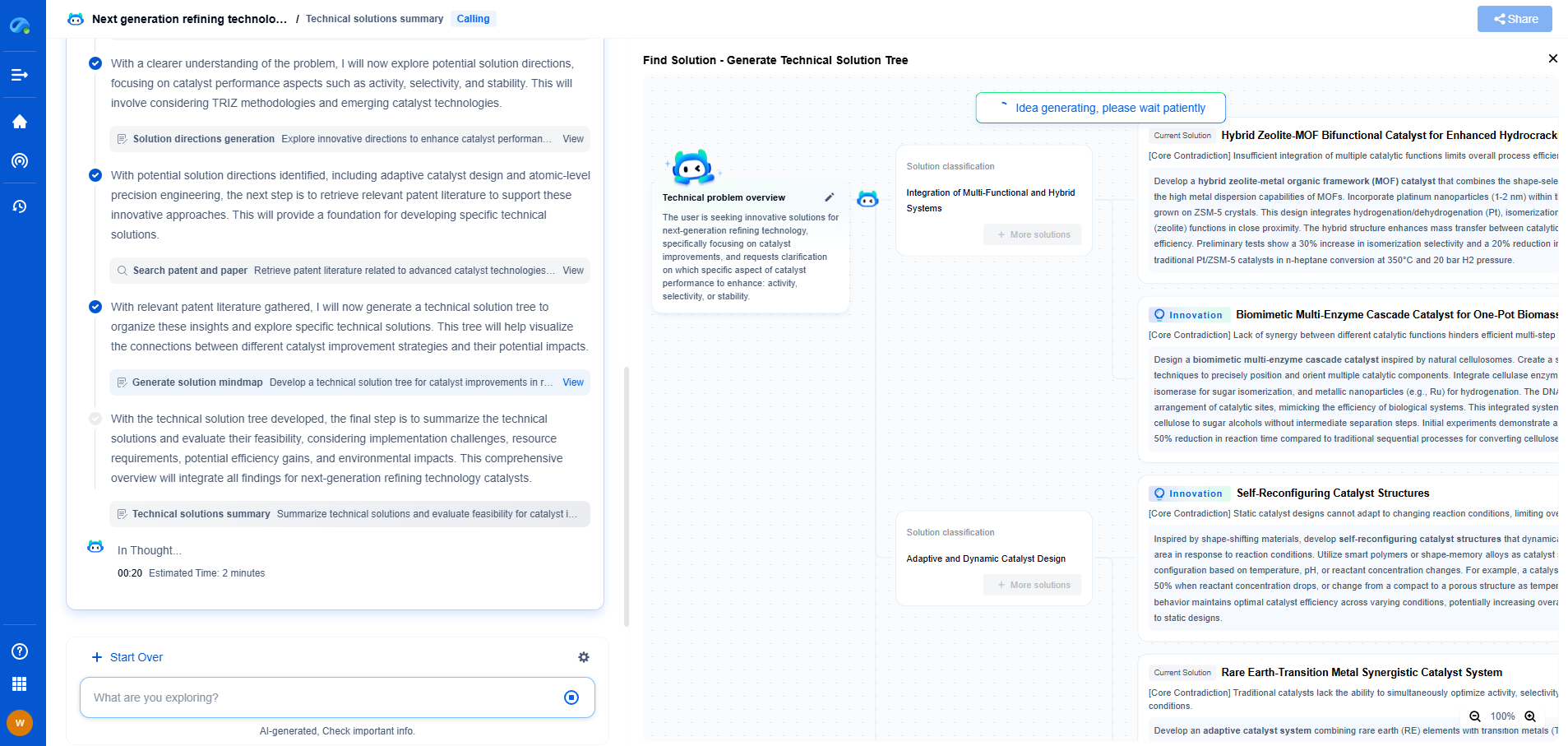How to Build a Signal Conversion System Using an Arduino?
JUN 27, 2025 |
In today's digital age, signal conversion systems have become an essential tool in interfacing various electronic components and devices. Whether you’re working with sensors, motors, or communication modules, converting signals from one form to another is crucial for smooth operation and communication. Arduino, a popular open-source electronics platform, offers a simple and cost-effective way to create a signal conversion system. This blog will guide you through the process of building a signal conversion system using an Arduino.
Understanding Signal Conversion
Before diving into the technical aspects, it’s important to understand what signal conversion entails. Signal conversion involves changing the form of a signal to make it compatible with other systems or devices. Common types of signal conversions include analog-to-digital, digital-to-analog, frequency conversion, and protocol conversion. Each type has specific applications and requires different approaches.
Choosing the Right Components
To build a signal conversion system with Arduino, you will need a few key components. These typically include:
1. Arduino Board: The choice of board depends on the complexity of your project. The Arduino Uno is a popular choice for beginners, while the Arduino Mega offers more pins and processing power for advanced projects.
2. Signal Sensors/Modules: Depending on the type of signal you need to convert, select appropriate sensors or modules. For example, an ADC (Analog to Digital Converter) module is used for converting analog signals to digital.
3. Breadboard and Jumper Wires: These are essential for building and testing circuits.
4. Power Supply: Ensure your system is adequately powered. You can use the Arduino’s built-in power supply or an external source for higher power requirements.
5. Additional Components: These may include resistors, capacitors, diodes, and other electronic components based on your specific needs.
Building the Circuit
Once you have gathered the necessary components, the next step is to build the circuit. Follow these steps:
1. Connect the Arduino to your computer using a USB cable for programming.
2. Assemble the circuit on a breadboard. Start by connecting the signal source to the appropriate pins on the Arduino. For analog signals, use the analog input pins; for digital signals, utilize the digital pins.
3. Add any required modules, such as ADCs, for signal conversion. Ensure all connections are secure and correctly aligned.
4. Use jumper wires to establish connections between the Arduino and other components.
5. Double-check all connections to prevent any short circuits or misconfigurations.
Programming the Arduino
With the circuit set up, it's time to program the Arduino. The programming involves writing code to read the input signal, process it, and output the converted signal. Follow these guidelines:
1. Install the Arduino IDE: If you haven't already, download and install the Arduino Integrated Development Environment (IDE) from the official Arduino website.
2. Write the Code: Start by writing a simple program to read the input signal. Use functions like analogRead() for analog inputs and digitalRead() for digital inputs. Process the signal as needed, and output it using functions like analogWrite() or digitalWrite().
3. Upload the Code: Connect your Arduino to the computer and upload the code through the IDE. Ensure the correct board and port are selected in the settings.
4. Test and Debug: Once uploaded, test the system to ensure the conversion process works as intended. Use debugging techniques to identify and fix any issues.
Applications and Examples
Signal conversion systems have diverse applications in various fields. Here are a few examples:
1. Sensor Data Conversion: Convert analog sensor data to digital form for processing and analysis.
2. Motor Control: Use PWM (Pulse Width Modulation) signals to control motor speed and direction.
3. Communication Interface: Convert signals between different communication protocols, such as I2C, SPI, and UART.
Conclusion
Building a signal conversion system using an Arduino can be a rewarding experience, offering insights into electronics and programming. With the right components and a clear understanding of signal conversion principles, you can create a system tailored to your specific needs. Whether you're a hobbyist or a professional, Arduino provides the versatility and accessibility needed to bring your projects to life.
Accelerate Electronic Circuit Innovation with AI-Powered Insights from Patsnap Eureka
The world of electronic circuits is evolving faster than ever—from high-speed analog signal processing to digital modulation systems, PLLs, oscillators, and cutting-edge power management ICs. For R&D engineers, IP professionals, and strategic decision-makers in this space, staying ahead of the curve means navigating a massive and rapidly growing landscape of patents, technical literature, and competitor moves.
Patsnap Eureka, our intelligent AI assistant built for R&D professionals in high-tech sectors, empowers you with real-time expert-level analysis, technology roadmap exploration, and strategic mapping of core patents—all within a seamless, user-friendly interface.
🚀 Experience the next level of innovation intelligence. Try Patsnap Eureka today and discover how AI can power your breakthroughs in electronic circuit design and strategy. Book a free trial or schedule a personalized demo now.
- R&D
- Intellectual Property
- Life Sciences
- Materials
- Tech Scout
- Unparalleled Data Quality
- Higher Quality Content
- 60% Fewer Hallucinations
Browse by: Latest US Patents, China's latest patents, Technical Efficacy Thesaurus, Application Domain, Technology Topic, Popular Technical Reports.
© 2025 PatSnap. All rights reserved.Legal|Privacy policy|Modern Slavery Act Transparency Statement|Sitemap|About US| Contact US: help@patsnap.com

